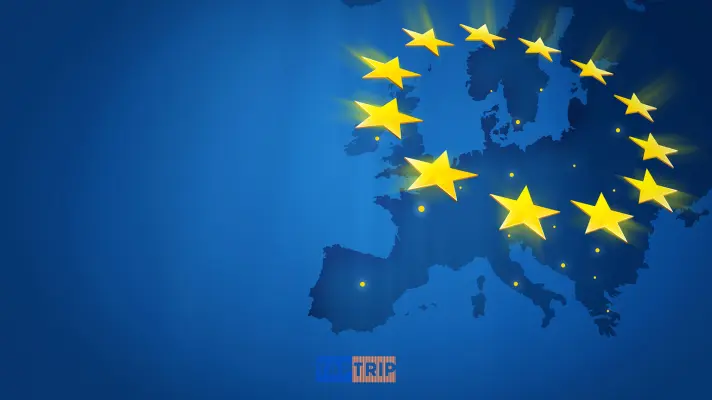ETIAS Proxy Application: Streamlining Your Travel Authorization Process
Are you planning a trip to Europe but find the visa application process overwhelming? Well, worry no more! The European Travel Information and Authorization System (ETIAS) is here to simplify your travel authorization requirements. In this comprehensive guide, we will delve into the world of ETIAS proxy applications, offering you a convenient way to obtain your travel authorization hassle-free.
Understanding ETIAS and Its Significance
ETIAS is an innovative electronic system introduced by the European Union to enhance security and streamline the visa application process for travelers from visa-exempt countries. It aims to safeguard the European borders while ensuring a seamless experience for visitors.
Who Needs ETIAS?
Before we dive into the details of proxy applications, let’s clarify who exactly needs to obtain an ETIAS travel authorization. Citizens from non-EU countries that currently enjoy visa-free travel to the Schengen Area will be required to apply for ETIAS. To determine if you need ETIAS, you can refer to the list of countries eligible for ETIAS.
ETIAS Requirements: A Brief Overview
To successfully obtain an ETIAS travel authorization, you must meet certain requirements. These include:
- Possession of a valid passport from an eligible country
- Providing accurate personal information, including your full name, date of birth, and nationality
- Answering security-related questions truthfully
- Paying the necessary fees associated with the application
For a more detailed understanding of the ETIAS requirements, feel free to explore our dedicated article on ETIAS requirements.
The Convenience of Proxy Applications
Now, let’s talk about proxy applications and how they can simplify the ETIAS application process. In certain situations, you may find yourself applying for ETIAS on behalf of someone else, such as a family member or a group of travelers. The proxy application option allows you to act as a representative, making the process more convenient for everyone involved.
How Does a Proxy Application Work?
When applying for ETIAS on behalf of another individual, you will need to provide their personal information and relevant travel details. This includes their full name, date of birth, passport details, and the purpose of their trip. It’s crucial to ensure that all the information provided is accurate to avoid any complications during the application process.
To learn more about applying for ETIAS on behalf of others and the specific guidelines to follow, refer to our comprehensive guide on proxy applications.

ETIAS Myths Busted and FAQs Answered
Welcome back to our guide on ETIAS proxy applications. In this section, we will address common myths surrounding ETIAS and provide answers to frequently asked questions. Let’s dive right in and clear up any misconceptions you may have.
Debunking ETIAS Myths
Myth 1: ETIAS is a Visa
One prevalent misconception is that ETIAS is a visa. However, this is not accurate. ETIAS is an electronic travel authorization required for visa-exempt travelers visiting the Schengen Area. It is not a full-fledged visa, but rather a simplified process designed to enhance security measures.
Myth 2: ETIAS Guarantees Entry into Europe
It’s important to note that obtaining an ETIAS travel authorization does not guarantee automatic entry into Europe. The final decision regarding entry is determined by border control officials upon arrival. ETIAS serves as a pre-screening process to identify potential security risks before travel.
Myth 3: ETIAS is Required for All EU Countries
While ETIAS is valid for 26 European countries in the Schengen Area, it does not cover all European Union member states. Countries such as the United Kingdom and Ireland, which are not part of the Schengen Area, have separate entry requirements.
For more myths and facts about ETIAS, check out our dedicated article on 7 Myths and Facts About ETIAS.
Frequently Asked Questions About ETIAS
Now, let’s address some frequently asked questions to provide you with a clearer understanding of the ETIAS travel authorization system.
An ETIAS travel authorization is valid for three years or until the expiration of the passport used during the application process, whichever comes first. It allows for multiple entries within its validity period, each stay not exceeding 90 days within a 180-day period.
Yes, you can apply for ETIAS regardless of your citizenship status. It is important to use the passport of the eligible country when applying for ETIAS to ensure a successful application.
If your ETIAS application is denied, you will receive a detailed explanation for the rejection. In such cases, you may have the opportunity to appeal the decision and provide additional documentation to support your application.
For more answers to commonly asked questions about ETIAS, head over to our informative article on Frequently Asked Questions About ETIAS.

ETIAS Travel Authorization with Limited Validity
Welcome back to our comprehensive guide on ETIAS proxy applications. In this section, we will delve into the concept of ETIAS travel authorizations with limited validity. Understanding when and why these limited-validity authorizations are applicable is crucial for smooth travel planning. Let’s explore this aspect of the ETIAS system in more detail.
What is ETIAS Travel Authorization with Limited Validity?
In certain situations, travelers may receive an ETIAS travel authorization with limited validity. This means that the authorization is granted for a specific period, shorter than the standard three-year validity. The reasons for limited validity can vary depending on the individual’s circumstances and the purpose of their trip.
When is Limited Validity ETIAS Applicable?
Limited-validity ETIAS travel authorizations may be applicable in the following scenarios:
Short-Term Visits: If your trip to the Schengen Area is for a specific event or a short duration, you may receive an ETIAS authorization with limited validity. This is common for individuals attending conferences, festivals, or short-term projects.
Passport Expiration: If your passport is set to expire before the standard three-year validity of an ETIAS, your travel authorization will align with your passport’s expiration date.
Specific Circumstances: In certain exceptional circumstances, such as medical treatments or temporary work assignments, you may be granted an ETIAS travel authorization with limited validity.
It’s important to note that the limited validity of an ETIAS does not affect the number of entries allowed or the maximum duration of stay per entry.
The Importance of Accurate Travel Dates
To ensure a seamless travel experience, it is essential to provide accurate travel dates during the ETIAS application process. This helps determine whether a limited-validity authorization is required based on the specific circumstances of your trip.
Planning Your Travel with Limited-Validity ETIAS
If you receive an ETIAS travel authorization with limited validity, it is crucial to carefully plan your trip within the authorized period. Ensure that your travel dates align with the validity dates specified on your ETIAS, and make any necessary arrangements accordingly.
For a comprehensive understanding of the ETIAS travel authorization process, refer to our detailed article on ETIAS Application.

Reasons for ETIAS Application Rejection and How to Appeal
Welcome back to our comprehensive guide on ETIAS proxy applications. In this section, we will discuss the reasons why ETIAS applications may be rejected and provide valuable insights on how to appeal a rejection. Understanding these aspects is essential to ensure a successful ETIAS application process. Let’s dive in!
Common Reasons for ETIAS Application Rejection
While the ETIAS application process is generally straightforward, there are instances where applications may be rejected. It’s important to be aware of the common reasons for rejection to avoid potential pitfalls. Here are a few factors that may lead to an ETIAS application being denied:
Inaccurate or Incomplete Information: Providing incorrect or incomplete personal information can lead to an application rejection. It is crucial to double-check all details before submitting your application.
Failure to Meet Eligibility Criteria: ETIAS has specific eligibility criteria that applicants must meet. If an applicant does not fulfill these requirements, their application may be rejected. Ensure that you meet all the necessary criteria before applying.
Security Concerns: ETIAS involves a security check, and if any red flags are raised during this process, the application may be rejected. It’s important to provide truthful answers and avoid any potential misunderstandings.
Failure to Pay the Required Fees: ETIAS applications require payment of certain fees. If the fees are not paid or if there are issues with the payment process, the application may be rejected. Make sure to complete the payment process accurately and in a timely manner.
For a more comprehensive understanding of reasons for ETIAS application rejection, refer to our dedicated article on Reasons for ETIAS Application Rejection and How to Appeal.
Appealing an ETIAS Application Rejection
If your ETIAS application is rejected, you may have the opportunity to appeal the decision. Here are some steps you can take to appeal an ETIAS application rejection:
Review the Rejection Notice: Carefully read the rejection notice provided to you. It will contain specific information regarding the reason for rejection.
Gather Additional Documentation: If you believe there has been a misunderstanding or if you can provide additional supporting documents, gather all the necessary evidence to support your appeal. This may include updated travel itineraries, employment letters, or any relevant documents that address the reason for rejection.
Follow the Appeal Process: Each rejection notice will outline the appeal process and provide instructions on how to proceed. Follow the given guidelines and submit your appeal within the specified timeframe.
Provide Clear and Concise Explanations: In your appeal, clearly and concisely explain the grounds on which you believe the rejection was unjustified. Address the specific reasons provided in the rejection notice and provide compelling arguments to support your case.
For a detailed guide on appealing an ETIAS application rejection, consult our informative article on Reasons for ETIAS Application Rejection and How to Appeal.





